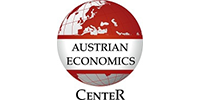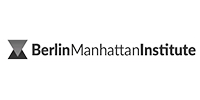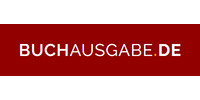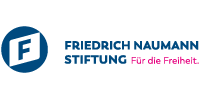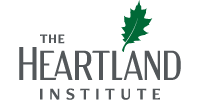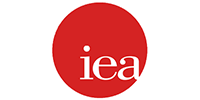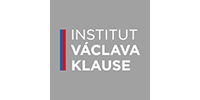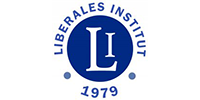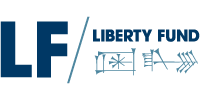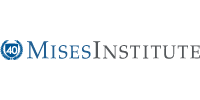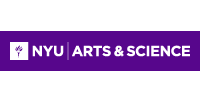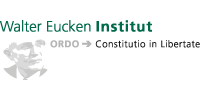Shadow banking’s opportunity, risk and regulatory challenge
Shadow banking has been gaining attention in the mainstream financial press in recent months, and although this sector is still largely unknown to most people, it has the potential to significantly impact them.
The term “shadow banking” typically refers to non-bank financial intermediaries that offer credit and other banking-like services outside traditional regulatory and legal frameworks. The largest form of non-bank financial intermediation is capital markets, pairing long-term financial assets with long-term liabilities. The relevant entities and investment vehicles, especially in the United States, where market-based finance is highly developed, are usually hedge funds, money market funds, asset-backed securities, mortgage-backed securities and special-purpose vehicles.
The last time this sector attracted global interest was, of course, in 2008, as structured finance products like collateralized debt obligations played an instrumental role in causing the Great Recession. This unfortunate occurrence is also frequently cited among the reasons given by supporters of higher regulatory standards to justify their position regarding the risks associated with shadow banking.
Non-bank financial services worldwide
There are many different types of services and concepts that fall under the blanket term shadow banking; most have almost nothing to do with “too big to fail” institutions and Wall Street gambling. Their form and purpose vary based on the global region in which they occur.
In China, peer-to-peer lending platforms were very popular until the government cracked down on them. In India, numerous non-banking financial companies provide loans and credit, along with countless informal lenders, payday loan providers, remittance operations and microfinance institutions. In Latin America and Africa, mobile money lending platforms are widespread, and in some cases, they play a larger role than traditional banks in the daily lives of average citizens.
A one-size-fits-all approach entirely overlooks the sector’s legitimate role in financial innovation.
Shadow banking critics continue to highlight its potential to amplify systemic risk and demand the sector be brought under the same scrutiny and regulatory standards as conventional banks. Yet this absolutist, one-size-fits-all approach entirely overlooks the sector’s legitimate role in financial innovation and access to credit and basic financial services. This is particularly significant in developing economies, where the latter cannot be taken for granted.
In regions where traditional banking has been inefficient, ineffective or insufficient, shadow banking has stepped in to bridge critical financing gaps for ordinary people. The question remains: Does the sector present more opportunity or risk in the long term?
The rise of shadow banking
The shadow banking sector has seen extraordinary growth over the past decade. According to S&P Global, shadow banking assets reached $63 trillion in 2022, up from $28 trillion in 2009, now representing 78 percent of global gross domestic product (GDP). Such explosive growth underscores the practice’s increasing importance in global finance, but it also shows there is clear demand for credit outside the increasingly stringent regulatory frameworks of traditional banks.
As a recent analysis by Dan Katz in the City Journal pointed out:
As financial systems evolved, they developed several mechanisms to manage banks’ instability: Walter Bagehot’s lender-of-last-resort model; deposit insurance; the tangled mess of capital and liquidation regulation embodied in the international Basel III standards; and the government backstop implicitly enjoyed by so-called global systemically important banks. These mechanisms help mitigate the risks of banking, but they cannot eliminate them. They also create significant problems, such as reducing the financial system’s efficiency by favoring certain banks over others and imposing distributed costs through implicit subsidies.
Therefore, it is hardly surprising that the ongoing rise in demand for private credit is driven by the need to cut through bureaucratic burdens and find more appropriate terms and pairings between lenders and borrowers beyond traditional banking options.
Among countries in the global majority, the reason fueling the increase in demand for shadow banking services is even more straightforward: There is simply no other alternative. In much of the developing world, financial exclusion remains elevated and persistent. This sector serves as an essential replacement for traditional banks, offering credit to individuals and businesses that would otherwise not be available in the formal financial system.
In addition to low financial literacy (which is certainly not a problem exclusive to developing economies), there are structural and administrative issues at play too. For instance, many countries face common barriers such as the lack of official identification (such as birth certificates or national identification documents), which banks require to open accounts. But there are also prohibitive costs that come with using conventional banks, including minimum required balances, high transaction fees and other complex compliance hoops that most low-income individuals cannot manage.
Making progress while satisfying needs
Technological advancements in the sector have already eliminated many of these obstacles and continue to open up access even further. Unlike traditional banks that depend on conventional credit-scoring models, some shadow banks leverage alternative data sources to evaluate creditworthiness, such as mobile payment records. Kenyan mobile lenders have been pioneers in this area, enabling people to store, transfer and receive money using just a mobile phone; others have combined mobile services with micro-lending and savings options.
The aforementioned peer-to-peer lending platforms also use different data sources to evaluate borrowers, such as transaction history and even social media activity. The innovations in shadow banking that have enabled companies to extend loans to previously underserved populations have provided significant support to economic growth and fostered entrepreneurship throughout the years. By offering a way out of unrealistic governmental and regulatory burdens, shadow banking offers useful services to underserved populations worldwide.
Scenarios
The growth of shadow banking has been garnering the attention of the financial press and, therefore, regulators and politicians as well. Elizabeth McCaul, a senior European Central Bank official, recently told the Financial Times that she sees the “remarkable” growth of private funds and other non-bank financial intermediaries as the biggest threat to the stability of the eurozone’s financial system.
However, it can be argued that overregulation itself is also a risk, as the regulatory environment is proving too onerous for an increasing number of market participants. As the FT highlighted: “Non-bank financial intermediaries, often dubbed ‘shadow banks’, in the EU held assets worth 42.9 trillion [euros] in the third quarter of last year, against 38 trillion [euros] held by traditional lenders, according to the European Commission.”
Somewhat likely: Shadow banking to grow and face regulation worldwide
As private credit and other non-bank financing solutions keep taking an ever-greater share of the market away from the traditional banking system, it is becoming increasingly likely that we will see a renewed push for tighter regulation on a global level.
Of course, there could be a considerable difference in the fervor and in the approaches adopted by regulators targeting the more mature side of the shadow banking sector, like the private credit markets in developed countries, compared to the smaller mobile finance solutions provided in the developing world. The push for regulation will stem from the increasing number of users and the perception of these platforms as a systemic risk.
Should this regulatory wave be effective and sweeping enough, it could significantly limit or even eradicate shadow banking practices. But it cannot eliminate the underlying demand for the service. People in many situations will still find traditional banks’ requirements too burdensome or exclusionary. As a result, in many cases, they will likely resort to even less transparent, more expensive and possibly exploitative alternatives, especially in the developing world. This could stifle economic activity and reverse any progress made towards greater financial inclusion.
More likely: Demand growth and technological advances to outpace regulation
A second, and more likely, outcome is that the aforementioned regulatory wave will face considerable resistance and be far less effective than many might expect. As the application of artificial intelligence and other technologies in finance advance, the efforts of many companies in the sector could outstrip regulatory developments, staying one step ahead.
Beyond that, however, market participants could benefit from these innovations to improve and expand their offerings, attracting an even broader customer base, including those currently using traditional banking services. This scenario could see government control over financial systems severely weakened. It could also open the door to alternative, private decentralized financial structures, potentially including parallel and private currencies.
This report was originally published here: https://www.gisreportsonline.com/r/shadow-banking/






